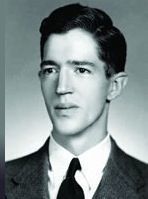On 31 July 1946, within the framework of the Venona project, American codebreaker Meredith Gardner managed to break the secret codes used by the Soviet Union in its intelligence activities in the United States for the first time. After decoding one phrase from intercepted cables his group decrypted other messages of Soviet agents coordinated by Moscow.
The Venona Project for counter-Intelligence of the United States operated from 1 February 1943 to 1 October 1980. The project was established at the time when the Soviet Union was an ally of the United States and continued operating during the Cold War. In 37 years of work, cryptanalysts decoded about 3,000 messages.
The project made it possible for the US to discover the “Cambridge Five” spy ring, as well as the work of Soviet intelligence in discovering the secrets of the creation of atomic bombs. Some of the coded messages had not been declassified in the United States until 1995.
The entire Cold War period was marked by a fierce intelligence rivalry; each side had its own triumphs and failures. For example, despite the success of the Venona project, Soviet intelligence officer Kim Philby found a way to get documents related to the project itself. In 1949, he found out that another Soviet agent Donald McLean was in danger. Later, in May 1951, McLean and his colleague Guy Burgess were able to flee to Moscow.
Meredith Gardner, who made it possible to arrest a number of Soviet nuclear intelligence agents, was strongly against their execution. He expressed his opinion thus: “These people at least believed in what they were doing.”
Source:
Lev Lainer. Venona - the most secret operation of the United States intelligence services. Moscow, Olma Press, 2003.
























